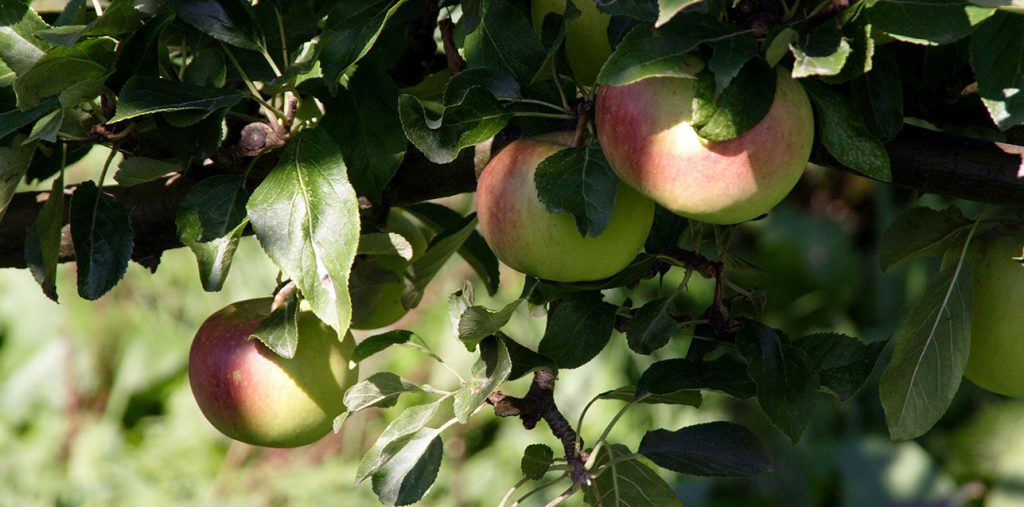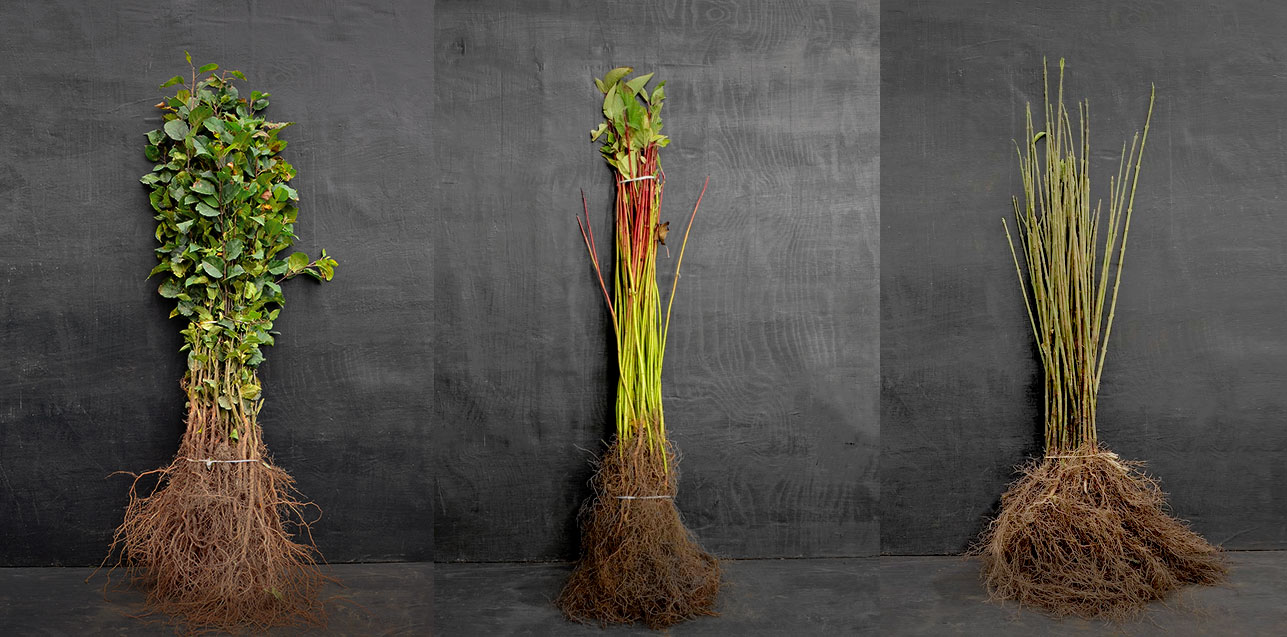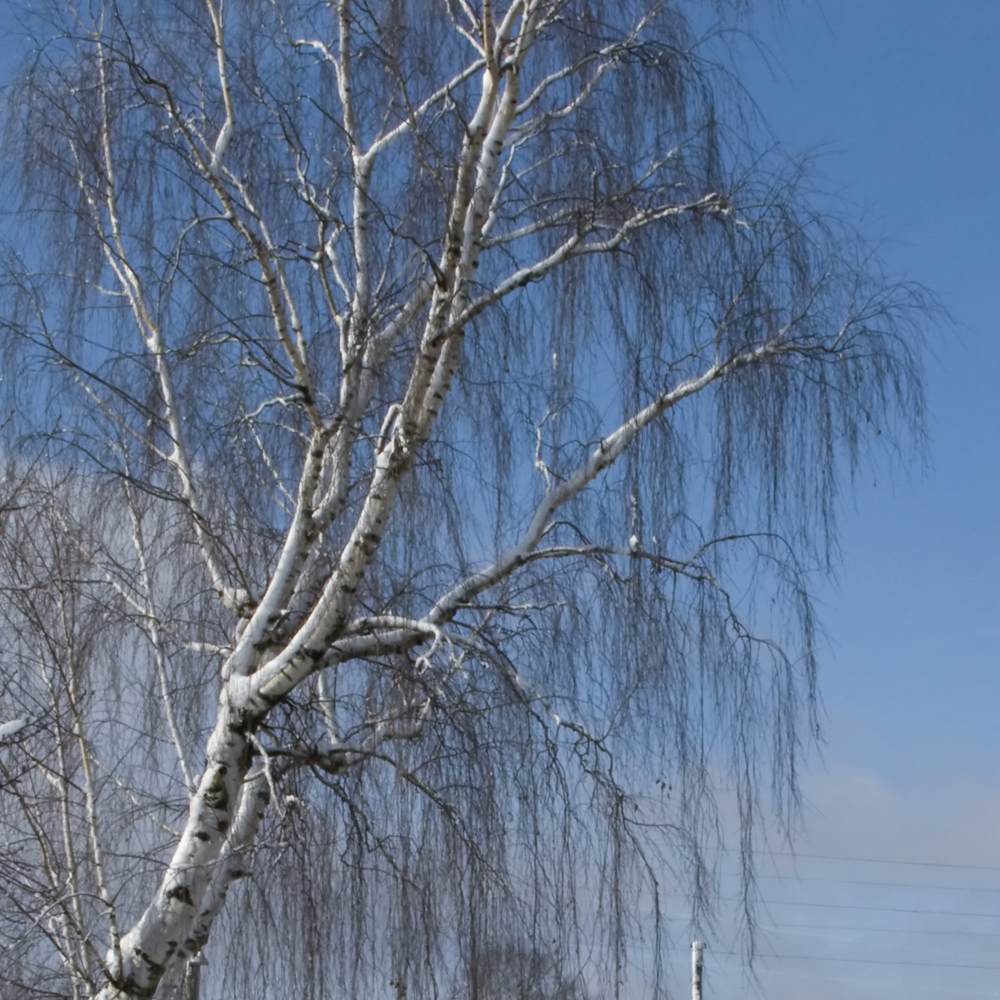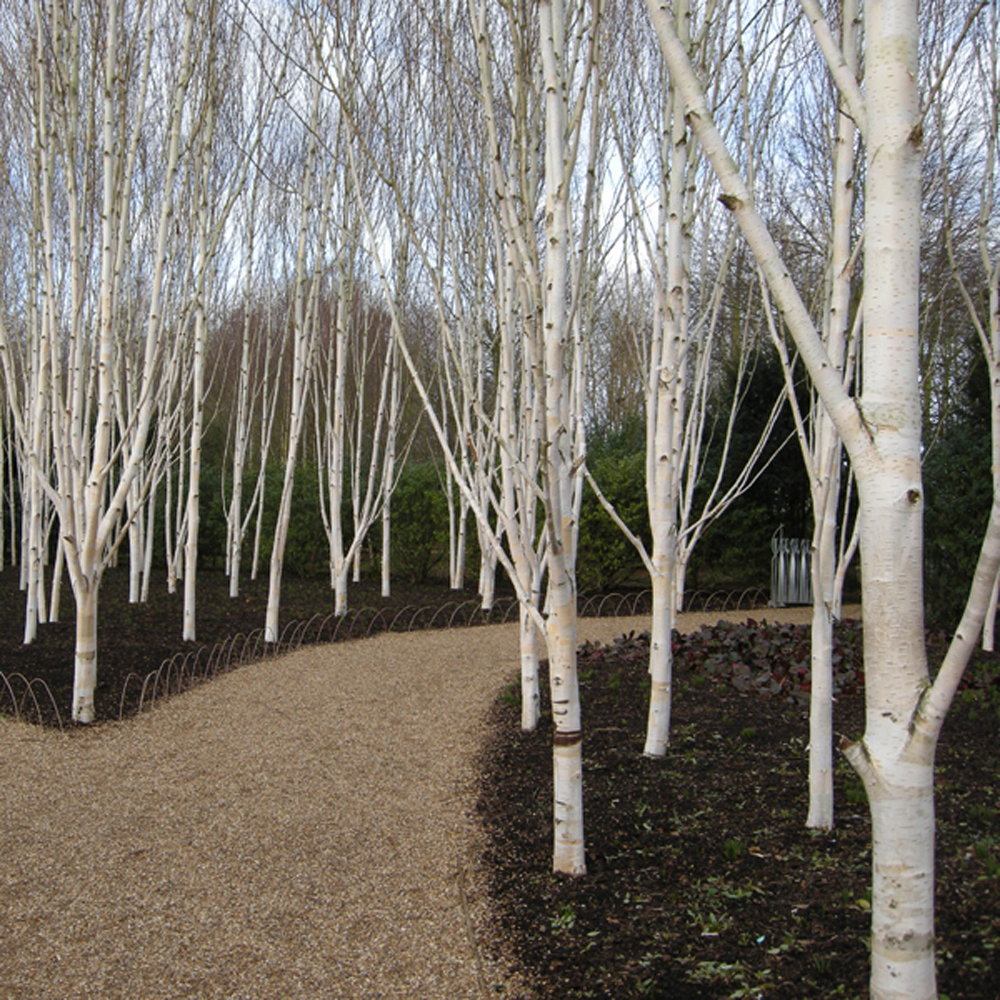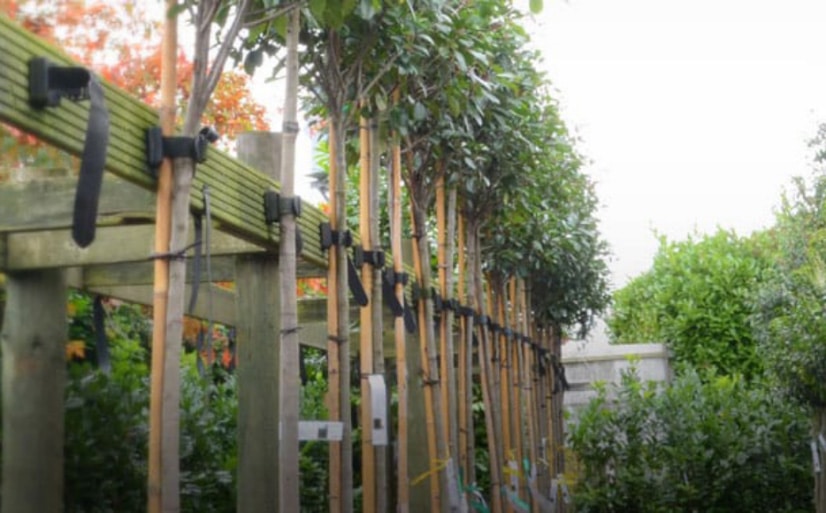We’ve put together a guide to Birch trees showcasing some of our most popular Birch tree varieties currently available at the Nursery. This beautiful trio includes Betula Pendula, Betula jacquemontii and Betula nigra – otherwise known as Silver Birch, Himalayan Birch and River Birch!
Betula pendula (Silver birch)
Silver birch is a truly valuable tree for larger gardens. Typically reaching around thirty feet in height, this native tree boasts an upright, compact form and is easily distinguished by its graceful, arching side branches. The Silver Birch adds beauty to any garden throughout the year, but it takes on a special significance in winter. During these grey months its strikingly bright white bark provides a welcome splash of light!
This adaptable tree is widely planted across the UK in both amenity and woodland environments, thriving in most reasonably well-drained soils. Our silver birch trees are available to order online, and can be delivered the very next day (depending on location).
Silver birch and improving air quality
A 2019 study by Wang et al. at the University of Lancaster investigated the ability of trees to capture diesel exhaust ultrafine pollutant particles (UFPs). Their findings indicate that Silver Birch trees are highly effective, capturing up to 79% of these airborne pollutants.
This evidence strongly suggests that Silver Birch trees play a crucial role in improving air quality, especially in urban environments. Consequently, we believe Betula pendula should be a key consideration for roadside planting initiatives. Read the full research article here.
Betula utilis Jacquemontii (Himalayan birch)
In recent years, the native birch has frequently been mistaken for the cultivar Betula utilis jaquemontii (Himalayan birch). This variety is known for its exceptionally white bark, which is even more striking than that of the Silver birch. This characteristic has made it a popular choice in the UK. Himalayan birch is also particularly effective in urban environments, where it is often planted in groups to create a wonderful visual impact.
The distinctive white bark of the Himalayan birch makes it one of the few trees that offers visual appeal during the winter months after its yellow autumn leaves have fallen. Another tree celebrated for its winter interest is the Tibetan cherry (Prunus serrula Tibetica), which features a beautiful, shiny mahogany-red bark.
Betula nigra
River birch (Betula nigra) is an excellent birch variety that is increasingly being chosen for wetter environments. It’s a truly valuable tree that we feel has been somewhat overlooked by architects and designers until recently. Betula nigra offers a strong alternative to traditional choices like willows and alders in wetter environments. It also features striking peeling bark, which provides significant visual interest, especially during the winter months. This creates a combination of practicality and aesthetic appeal that makes it a fantastic option for a range of landscaping projects!
Hopefully this guide to Birch trees helped you to consider potential candidates for your space. If you have any questions contact us by email, phone or visit our nursery in Rayne (Essex). We’re always happy to answer any questions you may have!
Check Out
Birch Trees (Betula) – King & Co Website
Semi Mature Trees – King & Co Website
A Guide to Himalayan Birch: Betula utlis Jacquemontii



